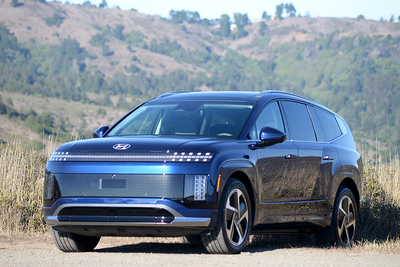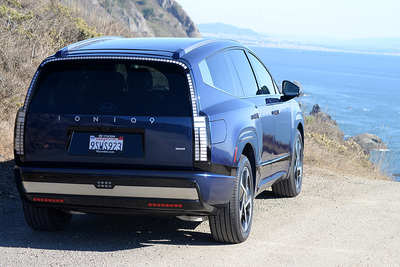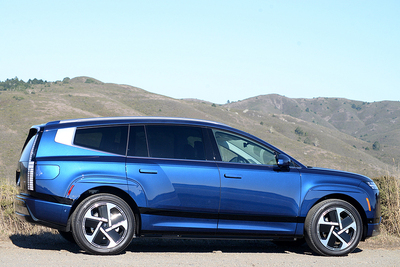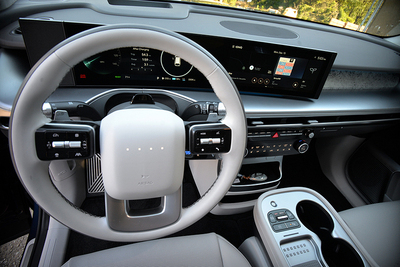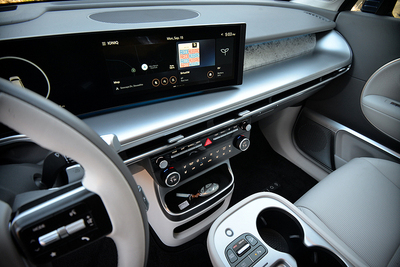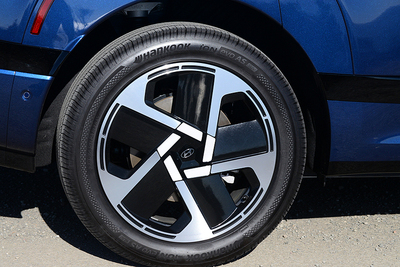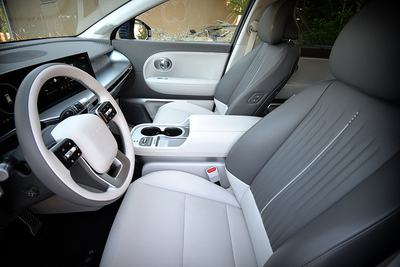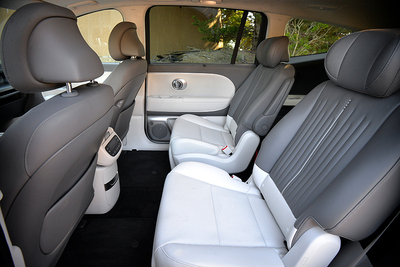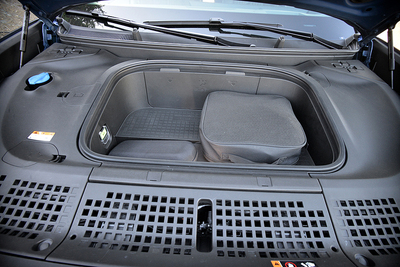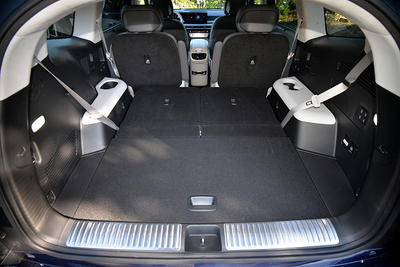2026 Hyundai Ioniq 9 AWD Performance - Review by David Colman +VIDEO
Looks good, but it's got some issues.
 David Colman |
Special Correspondent
THE AUTO CHANNEL
Hidden Exterior Door Handles! What more could you want than slickly streamlined door handles that only pop out of the flanks of your SUV when you approach it? Well, you might ask for old-fashioned fixed door handles. You know - the kind that are always present and accounted for when you need them. Like, maybe getting your kid out of the back seat of a burning car?
In the process of photographing this new Hyundai Ioniq 9 SUV, I discovered that I could either leave the vehicle ignition in the "ON" position so the dash display was illuminated OR get into the back seat for my photography of said dash layout. But I couldn't do both at the same time. Why, you ask? Because when the EV is ON, the rear door pulls inexplicably remain retracted. Now that's a downright dangerous situation. The rear handles only extend when the power supply is deactivated via the ON/OFF switch. And to makes things even more complicated, the stop/start switch is inconveniently located on the gear change stalk buried beneath the right spoke of the steering wheel. Open the Pod Bay Doors, HAL!
So this was my fraught reintroduction to the much ballyhooed world of EV eccentricity. In addition to the disappearing door handles, there are a few other visual clues distinguishing the looks of the Ioniq 9. The most obvious trendy styling gesture belongs to the 9's voluminous exterior pixel parade. Up front, arrayed across the nose of this Hyundai you'll discover 76 separate square running lights, a stylistic crescendo over-matched by 128 clear rear pixel cubes arching above the tailgate. For good measure, Hyundai designers threw in 16 more red cubes serving as rear brake lights.
Predictably, the 9's alloy wheels are pie-plate flat discs measuring 21 x 9J, incised with a bizarre-looking 5-spoke geometric pattern sure to confirm instant status in the EV club. Mounted on these rims are enormous (and enormously expensive) 285/45R21 Hankook ION EVO SUV radials with "EV Sound Absorber" lettering emblazoned on their sidewalls. While these extra heavy-duty tires (TW 600) may mute road chatter, they communicate bumps and heaves with unfailing accuracy. We found the Performance version of the Ioniq 9, equipped with self-leveling dampers, to be jarring over pockmarked surfaces. Even the utterly luxurious "Relaxation Seats" of the Calligraphy model can't compensate for the rambunctious ride quality of the Performance I-9.
Hyundai offers three different powertrain combinations for its new EV 9. The entry-level S version, which uses a 215hp single electric motor to power only the rear wheels is the comparative weakling of the model line, despite the fact that it retails for a pricey $60,565. Move up a rung to the S and SE models, and you get front and rear axle electric propulsion, making 303hp. Our test Performance Calligraphy Ioniq 9 (base price $74,990) adds a more powerful front motor to the mix for a combined output of 422hp and 516lb.-ft. of torque. Those impressive numbers raise the Performance version's tow rating to 5,000 pounds from the 3,500lb ceiling of lesser models. With a horsepower-to-weight ratio of 14.29lb/hp, the Performance I-9 lays down straight line performance less powerful variants can't hope to match. Whereas it takes the 215hp I-9 a flaccid 8.5 seconds to reach 60mph from a standing start, our Performance model drops that ET to just 4.4 seconds. Keep your foot planted for the Standing Start quarter mile, and the Performance variant will trip the clocks at 104mph in 13.1 seconds - on the way to a governed top speed of 129mph.
But all that speed is rather academic when it comes to a vehicle weighing in at just over 3 tons. Aside from prodigious straight line pop, there's absolutely nothing "Performance" oriented about this rather misleadingly titled version of the Ioniq 9. Steering feedback is rather unintuitive, while the heavily exaggerated regenerative brakes annoyingly defy smooth deceleration. The sheer size of the vehicle is magnified by non-existent sightlines to all four corners, a shortcoming that prevents you from elevating your plodding back road pace beyond a canter. Despite its sleek outward appearance and admittedly wind-cheating 0.269 coefficient of drag (Cd), this big rig will prove no more adept at strafing apexes than a loaded school bus. On top of that, add truncated battery life to the debit list if you actually use all the available throttle. Doing so will hasten the onset of the Sisyphus conundrum handicapping all "Performance" EV's: throttle down will drain your promised 280-mile Driving Range faster than you can find a working charger. For my $77,040, I'll select something with hybrid power and a gas tank to fill when push comes to shove. That something would be Hyundai's outstanding 2026 Palisade Calligraphy hybrid I tested just a few weeks ago. It's a sister to the Ioniq 9, but unlike the EV, it's got your back when the fuel gauge approaches zero.
2026 HYUNDAI IONIQ 9 AWD PERFORMANCE CALLIGRAPHY
-
• MOTOR: Front and Rear permanent-magnet synchronous AC motors + 110kWh Liquid-Cooled Lithium-Ion Battery Pack
• HORSEPOWER: 422hp
• TORQUE: 516lb.-ft.
• FUEL CONSUMPTION: 85MPGe
• RANGE: 311 Miles
• CHARGE TIME: 11.5 Hours (240V)
• PRICE AS TESTED: $77,040
HYPES: Slick Looks, Intriguing Interior
GRIPES: Precious EV Design Flourishes, Off-Putting Recharge Limitations
STAR RATING: 6 Stars out of 10
©2025 David E Colman



